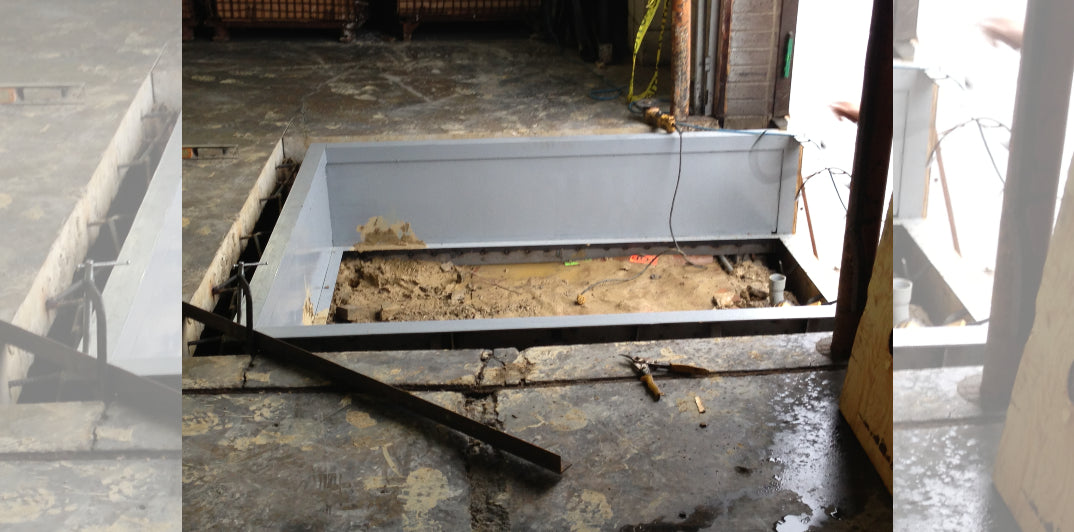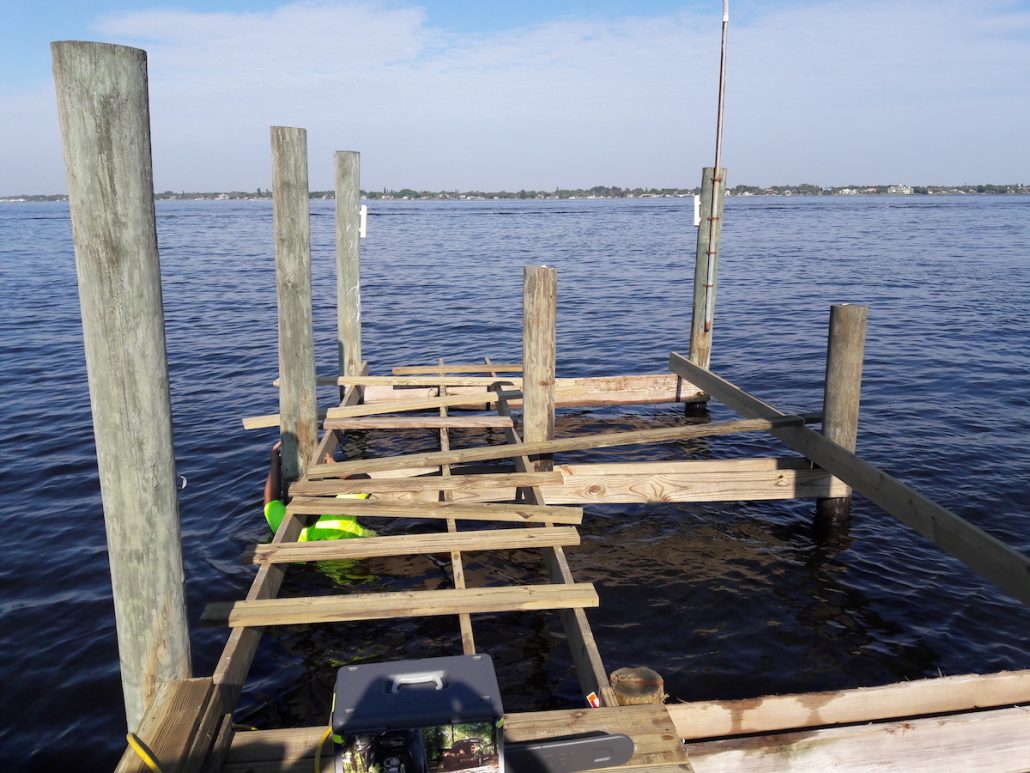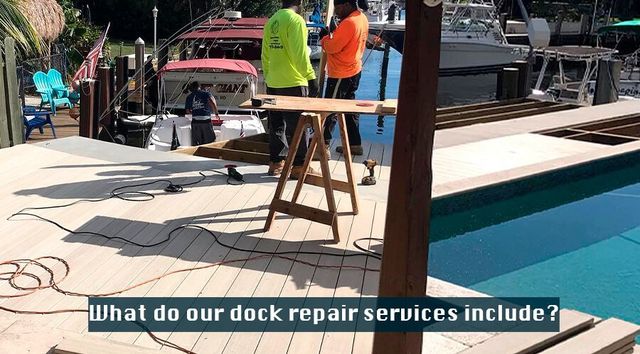The Value of Timely Dock Repairs for Waterfront Safety
The Value of Timely Dock Repairs for Waterfront Safety
Blog Article
Effective Dock Repair Work Techniques: Guaranteeing Structural Stability
Making sure the architectural stability of docks through effective repair work methods is vital for the durability and security of marine facilities. This involves a multi-faceted technique beginning with detailed assessments using advanced technologies like finder devices and remotely operated cars (ROVs) to spot both visible and concealed damages. Subsequently, selecting the ideal fixing products, such as composite materials and corrosion-resistant alloys, is essential for sturdiness. Structural support techniques, consisting of the implementation of cross-bracing systems and load-distribution plates, play a vital duty in mitigating anxiety points. Nonetheless, the importance of these techniques ends up being apparent when exploring innovative repair service methods and preventative upkeep strategies.
Assessing Dock Damage
Evaluating dock damages is a crucial very first step in guaranteeing the structural integrity and safety of any docking facility. Key elements to analyze include the dock's foundation, pilings, decking, and equipment (Dock Repairs).
Architectural designers or certified examiners normally execute these assessments utilizing specialized tools and strategies. Undersea assessments might employ finder devices or remotely operated cars (ROVs) to spot immersed damage. Above water, aesthetic assessments are matched by utilizing dampness meters and various other diagnostic tools to reveal underlying problems not right away visible to the nude eye.

Deciding On Repair Work Materials
Picking the appropriate repair work products is a crucial action in the dock remediation process, one that straight affects the durability and performance of the fixed framework. Product selection must be driven by factors such as ecological problems, load-bearing requirements, and compatibility with existing dock components.
Along with timber, composite materials are significantly preferred because of their longevity and reduced maintenance requirements. Compounds, normally made from a blend of plastic and timber fibers, use outstanding resistance to rot, insects, and UV damage. For metal anchors, choosing corrosion-resistant alloys such as galvanized steel or marine-grade aluminum is necessary to avoid rust and guarantee architectural stability in saline water problems.
Epoxy resins and marine-grade sealants are indispensable for fixing splits and sealing joints, supplying a water resistant barrier and enhancing the dock's general toughness. By meticulously selecting top notch materials, dock repair work can accomplish durable outcomes, thereby protecting versus future destruction and making certain safe, dependable usage.
Architectural Support Techniques
Reliable architectural support methods are important in making sure the security and durability of dock repairs. This method is especially efficient for docks exposed to hefty lots or severe environmental problems.
An additional necessary method is the application of fiber-reinforced polymers (FRP) These materials supply high strength-to-weight proportions and outstanding resistance to rust, making them optimal for reinforcing wood or concrete docks. FRP can be used in strips or sheets and bonded with epoxy materials to enhance architectural stability.
Supporting and securing systems additionally play a crucial function in architectural reinforcement. Cross-bracing, using metal or wood light beams, can counteract side forces, reducing swaying and activity. Securing systems, such as helical piers or driven heaps, give a steady structure by transferring loads to deeper, much more steady soil layers.
Finally, the integration of load-distribution plates can help distribute weight extra evenly across the dock's surface, minimizing localized stress points. These methods jointly guarantee that docks my site continue to be secure and durable, efficient in holding up against the roughness of their functional setting.
Advanced Repair Approaches

Another sophisticated strategy includes underwater welding, which permits repair services to be performed without the need to dewater the location. This technique is especially helpful for addressing architectural problems in submerged dock elements, making sure marginal interruption to procedures. Improved welding methods, combined with robotic systems, deliver precision and reliability, consequently extending the life-span of the dock.
Furthermore, cathodic pop over to this site protection systems are applied to avoid rust in metallic dock structures. By utilizing sacrificial anodes or impressed present systems, these strategies properly alleviate the electrochemical procedures that result in material degeneration.
Last but not least, progressed tracking technologies, such as architectural wellness monitoring (SHM) systems, supply real-time data on the condition of dock frameworks. These systems make it possible for proactive upkeep and timely interventions, inevitably making sure the lasting architectural honesty of the dock.
Maintenance and Avoidance
Maintenance and prevention are fundamental concepts that underpin the long life and security of dock structures. Regular assessments are paramount, allowing for early detection of wear and tear, possible weak points, and ecological influences. A proactive strategy, involving routine checks for deterioration, rot, and structural changes, minimizes pricey repairs and prolongs the dock's operational life.
Preventive measures must include using safety finishings to steel elements to secure versus rust and making use of treated timber to resist degeneration. Additionally, guaranteeing appropriate drainage and air flow can stop water build-up, which is a typical root cause of architectural deterioration. Including quality materials and adhering to supplier standards during building and construction and repair phases likewise play critical duties in enhancing toughness.

Educating employees in dock maintenance ideal practices makes certain regular application of safety nets. Leveraging technical breakthroughs, such as drones for assessments and sensors for real-time monitoring, can even more enhance upkeep efforts. click for more info By focusing on maintenance and prevention, dock owners can ensure structural honesty, operational safety, and cost-efficient administration over the dock's life expectancy.
Conclusion
Finally, preserving the structural honesty of aquatic centers requires extensive dock repair work techniques. Comprehensive inspections making use of advanced devices uncover both noticeable and concealed damages, while the choice of proper fixing products enhances durability. Applying structural reinforcement approaches addresses anxiety factors efficiently. Advanced repair strategies, combined with routine upkeep practices, make sure the dock continues to be risk-free and operational under varied environmental problems. Embracing these methods substantially prolongs the lifespan and capability of aquatic facilities.
Making certain the architectural honesty of anchors with reliable repair service methods is critical for the long life and safety of aquatic centers.Choosing the ideal repair service products is a critical action in the dock restoration procedure, one that directly influences the durability and performance of the repaired structure.Effective architectural reinforcement methods are critical in making sure the security and longevity of dock repair work. By prioritizing maintenance and avoidance, dock proprietors can guarantee architectural stability, operational safety and security, and cost-efficient administration over the dock's lifespan.
In verdict, maintaining the structural honesty of marine centers necessitates comprehensive dock repair service techniques.
Report this page